Roman-style pizzerias: My five favorite in Rome
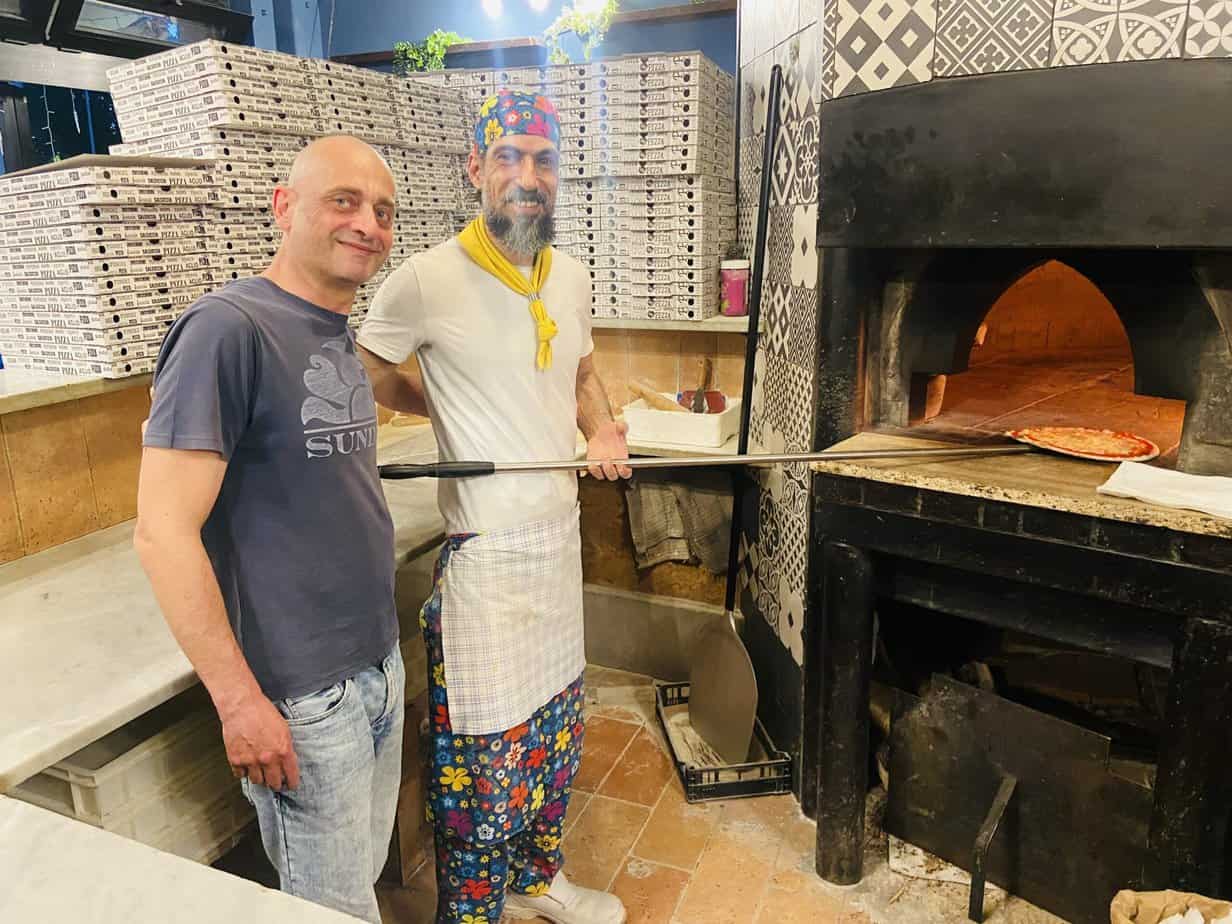
I just spent two weeks tasting pizza around Rome for an update on my Five Favorite Pizzerias in Rome.
Now this is my idea of “journalistic research.”
I am spurred on not only by a need to replenish my list after eight years but also my eternal craving for the world’s best pizza, I combed the city trying new places and updating old ones.
This list, my first since 2016, has a new requirement. I limited it to Roman-style pizzerias. This is different than the classic Neapolitan style from Naples. That’s where pizza in its current form began in 1889 when the city created a margherita pizza (tomato sauce, mozzarella and basil, representing the colors of the Italian flag) to honor a visit from Queen Margherita of Savoy.
Neapolitan pizza is famous for its thicker, chewier crust, called pizza alta. The European Union and UNESCO even recognizes Neapolitan pizza. The less-famous Roman pizza, called pizza bassa, has a thin crust. It’s almost a large, round cracker. But it’s so tasty, the pizza al taglio, or pizza by the slice, all over Italy sell the crust separately as pizza bianca.
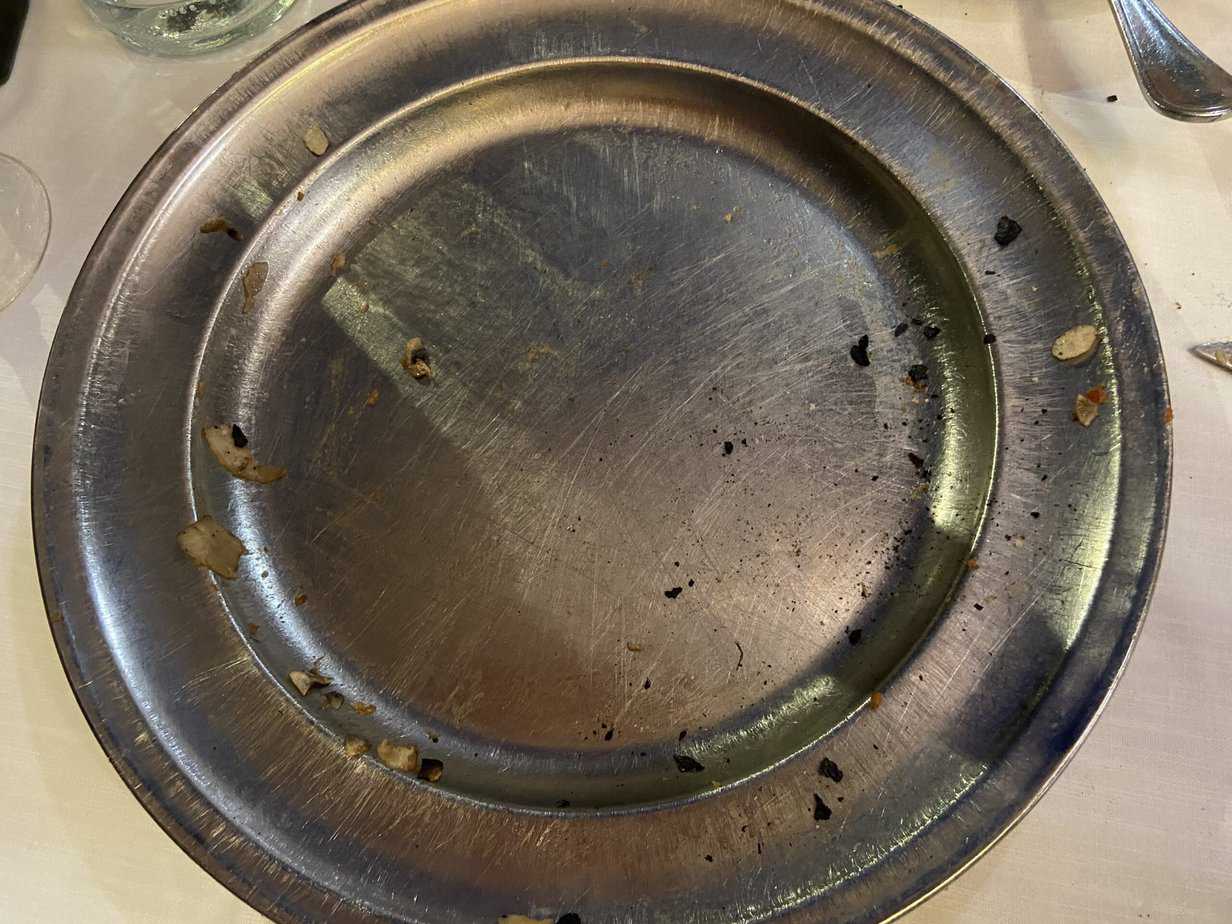
The beauty of Roman-style pizza is that afterwards you don’t feel full. Add the natural toppings and it almost tastes and feels like health food. Finish the pizza and the tray is so dry it wouldn’t stain a doily.
Roman-style pizzerias
Roman-style pizza is the polar opposite of American-style pizza which could clog the arteries of an entire frat house with one trip to Pizza Hut. American pizza is so fattening it could grease an International Harvester.
The summer after my senior year in high school I worked as a dough roller in a pizzeria in Eugene, Oregon. Everything on a Papa’s pizza came from a can or box. The tomatoes. The cheese. The pepperoni. Everything. The pizzas were nearly synthetic. The pizza crusts I made were stored in a giant refrigerator.
Nearly all the pizza crusts in Rome, outside the tourist traps on the major piazzas, are fresh.
Roman pizza dates well before 1889. Ancient Rome’s form of pizza was an oblong flatbread topped with cheese, honey, dates, figs, nuts or vegetables. Tomatoes weren’t introduced into Italy until they came from Latin America in the early 16th century.
These Ancient Roman pizzas, called “pinsa,” were sold to the working class who needed something cheap, fast and filling to get through their laborious days
Today, the Roman pizza crust uses oil for crispness and less water. It’s cooked for three minutes at 350 degrees and always in a wood-fire oven. If you enter a pizzeria in Rome and see they use electric ovens, run.
The classic Roman pizza is the capricciosa: ham, mushrooms, olives, artichokes, egg and tomato sauce. My favorite is hard to find but I order it off menu. Nearly every pizzeria in Rome sells it.
Gorgonzola and salsiccia: The Italian bleu cheese originally from the Lombardy region with lean sausage.
The Roman style qualifier is a reason I have nearly an entire new list from 2016. From that list, 72 Ore levitates its pizza dough for three days, thus, the name. La Pratolina moved locations. La Gatta Mangione and Sforno are Neapolitan.
Not making this list was Dar Poeta, probably the most popular pizzeria in the rollicking Trastevere neighborhood down the hill from me. It levitates its dough 48 hours so it isn’t quite Roman or Neapolitan. It’s in the middle.
Da Baffetto has been in Centro Storico for 80 years and there is always a huge line but it has become so touristy, its menu is in five languages.
On a culinary journey exploring Rome’s pizzerias, each slice carries a unique Italian flavor and cherished travel memories. To make these precious moments everlasting, Custom Pin Badges can become a unique souvenir.
So after living in Rome 10 years, here are my five favorite pizzerias for Roman-style pizza. They are all so close and offer their own unique superlatives, I did not rank them. They’re in alphabetic order (Neighborhood is in parentheses):
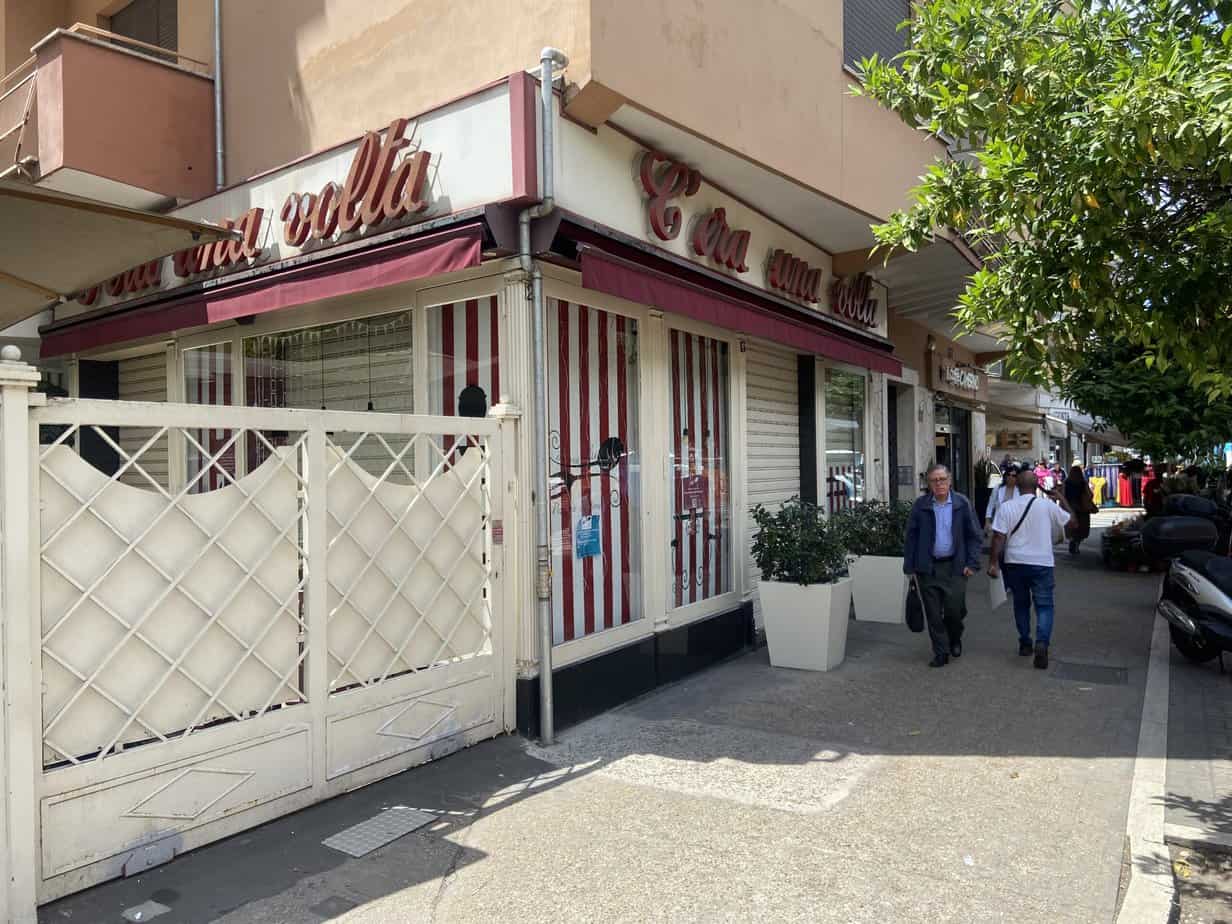
C’Era Una Volta (Monteverde Nuovo)
Piazzale Enrico Dunant 13, 39-06-536-278, https://ceraunavolta-ristorante.it/, 7 p.m.-midnight.
I plead guilty to bias here. C’Era Una Volta (There Was a Time) is my neighborhood pizzeria. It’s right around the corner from my apartment and where I get free home delivery while watching my A.S. Roma on TV.
This is where I first discovered the glory of gorgonzola and salsiccia. Good, fresh gorgonzola, my favorite Italian cheese, is so hard to find in the U.S. It’s easy to find in Rome but rare on pizzas. C’Era Una Volta’s gorgonzola is always fresh and biting, the perfect combination with the lean sausage.
I also like its quattro formaggio (four cheese) pizza. The four cheeses – gorgonzola, mozzarella, provolone and parmigiano – are always fresh. You can tell by the complete lack of grease it leaves. Pizzas range from €6 to €9.50
C’Era Una Volta has anchored one corner of the huge crossroads of Piazzale Dunant for more than 60 years. It has a covered, outdoor garden area always filled with groups and families on Sunday.
Also, I love a pizzeria that when I call, they say, “Gianni! Una pizza per Via di Monte Verde? (My street.)
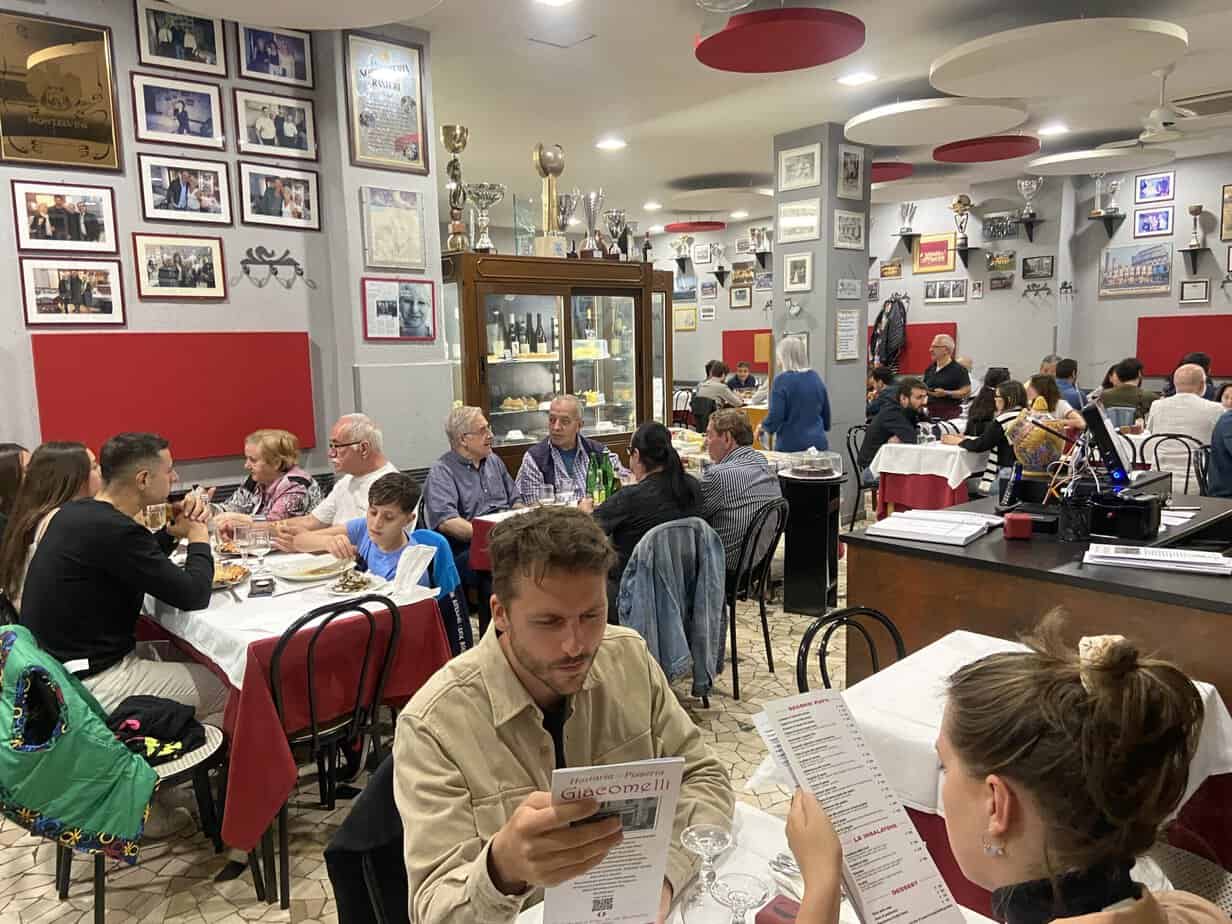
Giacomelli (Prati)
Via Emilio Faà di Bruno 25, 39-06-372-5910, https://pizzeriagiacomelli.it/, 12:30-2:45 p.m., 7-11:45 p.m., Tuesday-Sunday.
Alessandro, my good friend, Rome restaurant expert and Rome native, adores this place. He first took me here eight years ago where an American dingbat tourist who came along actually asked for parmesan on her pizza, a violation of Roman law punishable by deportation. I don’t recall ever seeing her again.
Giocomelli opened in 1946 on a quiet street one kilometer north of the Vatican. The walls are lined with old photos of visitors, famous or just friends, throughout the years. I returned Friday night where I took an outside table on a sidewalk that soon filled with hungry people waiting for one. By 8:15 p.m. the number had swelled to about 30.
The hustling waiter told me from 7-9 p.m. it’s 80 percent tourists; from 9-11 p.m. it’s 80 percent Romans.
I can see why. My sausage and mushroom pizza on a bed of fresh tomato sauce just exploded with flavor, a sign that the meat has little fat. The crust was crisp and slightly burnt along some edges from the wood fire oven.
Giacomelli is one of the few pizzerias in Rome that sell small, medium and large. Pizzas range from €6 for a small to a large capricciosa for €12. My large was €11 and with a half liter of Merlot wine from Rome’s Lazio region, dinner for two was €38. Reservations are a must.

La Montecarlo (Centro Storico)
Vicolo Savelli 13, 39-06-686-1877, https://www.lamontecarlo.it/, noon-midnight Tuesday-Sunday.
Centro Storico isn’t known for its solid, authentic restaurants, particularly not the pizzerias. But I will recommend Montecarlo. It’s a rough-and-tumble, gritty, no-frills pizza joint on the alley connecting Centro’s main street of Corso Vittorio Emanuele with my Abbey Theatre soccer pub. I pass it every week.
Opened in 1988, Montecarlo has two dozen tables on the cobblestone alley where you can dine outside in Rome’s weather about nine months a year. Huge fans cool diners on steamy summer nights and nearly clip me as I stumble out of Abbey Theatre.
My salame piccante (spicy salami) pizza, served in only five minutes, is the closest thing I’ve had to the pepperoni pizza you’d find in the U.S., minus the grease. (Please note: pepperoni in Italian means “bell peppers” so unless you’re a vegetarian, don’t order one.)
My small circles of spicy salami were just hot enough to coat my mouth without chugging the half liter of house wine I bought for only €8. Pizzas range from €6-€13. My meal came to €20.
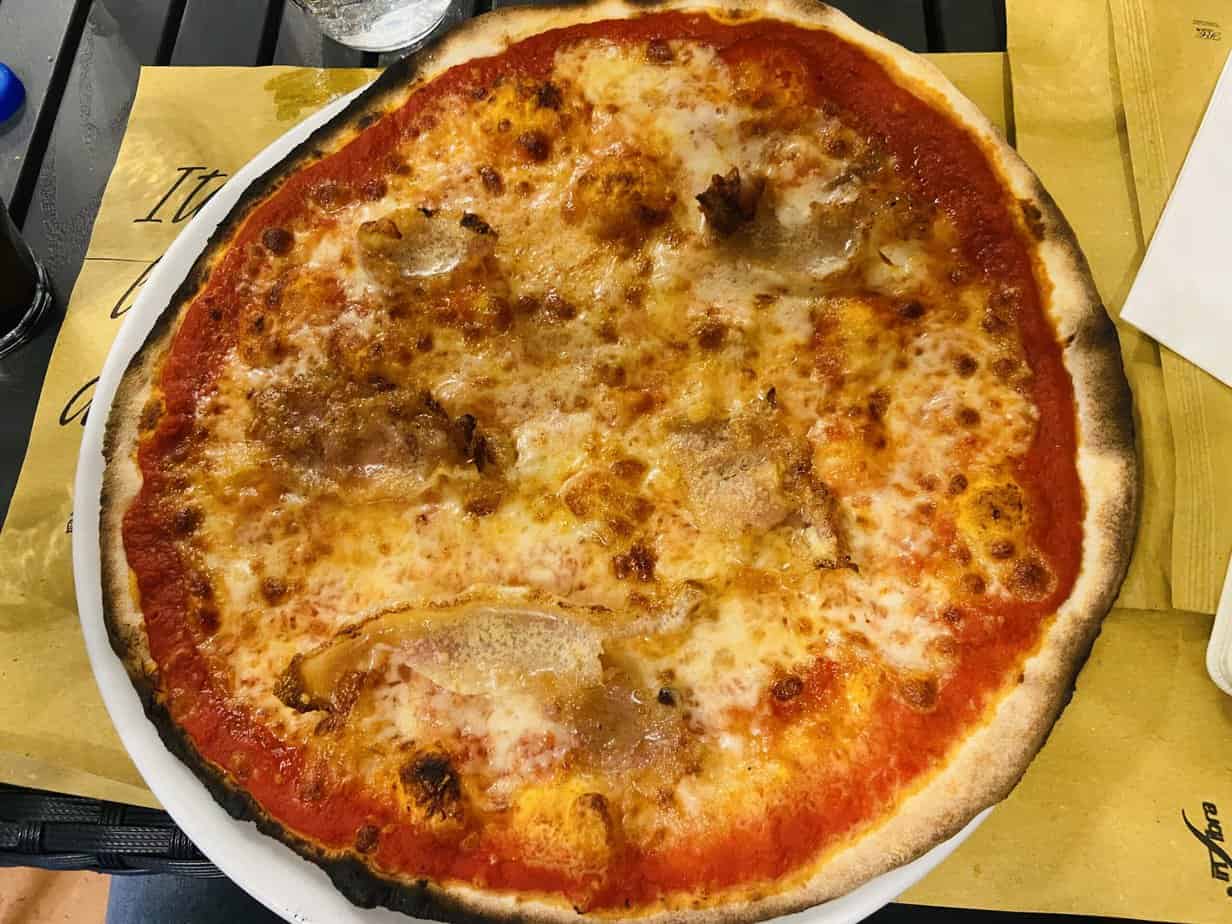
Pepito’s (Trastevere)
Via degli Stradivari, 17/19, 39-06-589-7649, https://pepitospizzeria.webnode.it/, 7-11:30 p.m. Wednesday-Monday.
You won’t find Pepito’s in many travel guides. I found it when I moved to Rome in 2014. It was just across the Tiber River from my old apartment in Testaccio. Pepito’s, around for 30 years, is in a small strip mall away from Trastevere’s crowds and maze of alleys about a mile south down Viale Trastevere.
It has small tables inside and outside with placemats emblazoned with the map of Italy. You can see your pizza cooking in the wood-fired oven near the entrance.
It’s a five-minute tram ride from my apartment and 10 years ago I fell in love with its amatriciana pizza. I returned two weeks ago and it’s as good as ever. If you’ve been to Rome, you’ve had to try pasta amatriciana. That’s spaghetti with guanciale (pig’s cheek), Pecorino Romano, tomato sauce and a dash of chili pepper. Picture that on a crunchy Roman-style pizza crust and you have an amatriciana pizza.
Pepito’s pizza menu is massive. It lists 34 pizze classiche and 23 pizze speciale. (Care for a pizza sole: mozzarella, salmon, courgette flowers and tomatoes), ranging from €6.50-€15.
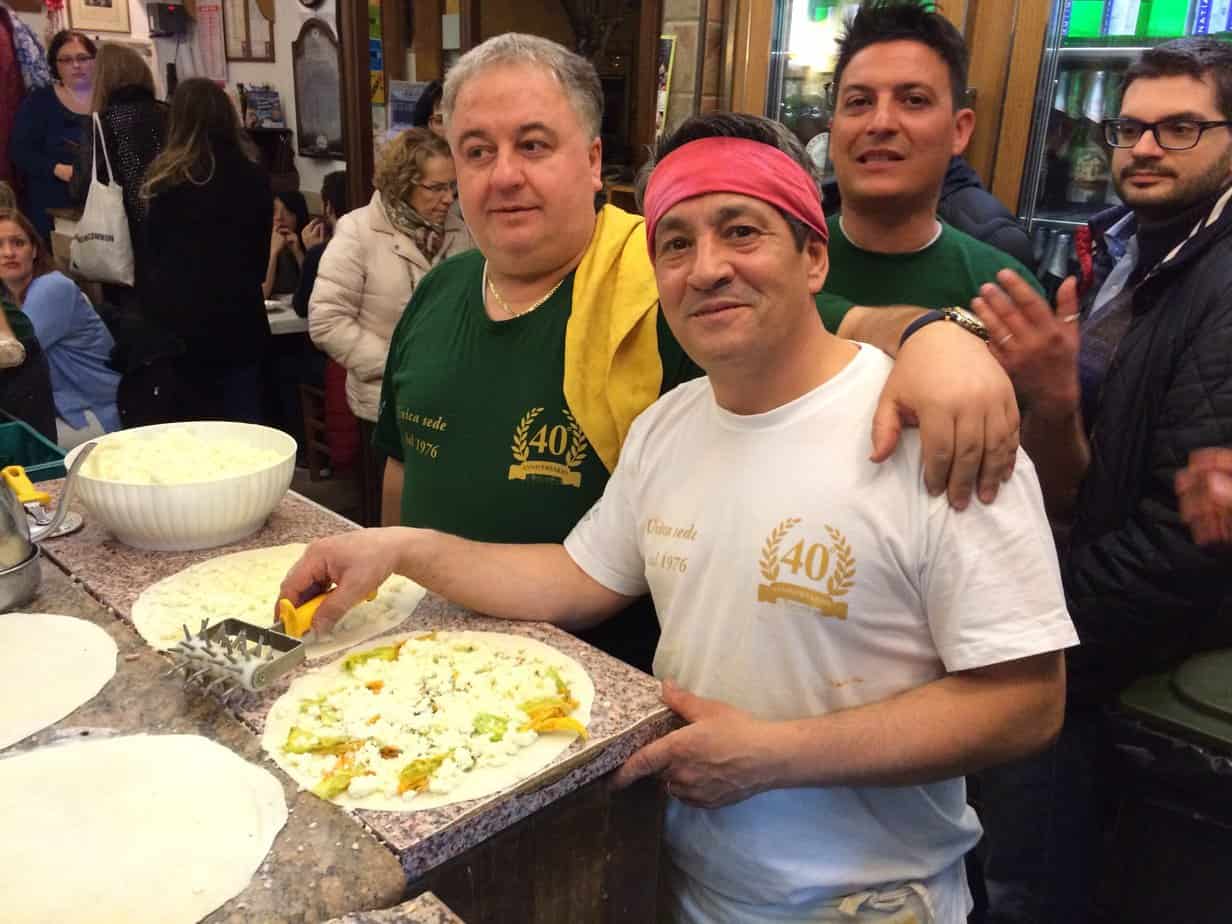
Pizzeria Remo (Testaccio)
Piazza di Santa Maria Liberatrice 44, 06-574-6270, 7 p.m.-1 a.m.
My lone holdover from my 2016 list, Remo was my go-to pizzeria when I lived in Testaccio from 2014-2018. It was 200 meters from my apartment across from Piazza di Santa Maria Liberatrice where I used to hang out reading Corriere Dello Sport and listening to the old locals talk in Roman dialect.
It’s as classic a Roman pizzeria as you’ll find. It’s 48 years old. It’s crowded. It’s loud. It’s chaotic.
It’s run by a family and the brothers are waiters who seem to always yell at each other. Tomato sauce is practically flying through the air. Pizzeria Remo is the least romantic restaurant in Rome. But guys, it’s the ideal place to take a first date. She won’t get too intimidated, and you won’t get too horny.
I always ordered my regular: a sausage pizza. It’s simple. It’s basic. It’s traditional. But the flavors are not. It’s tomato sauce, mozzarella cheese and juicy chunks of lean sausage. I have no idea where these pizzerias find sausage so lean, so void of fat. Maybe there’s a farm outside Rome where pigs run wind sprints. But the sausage combined with the melted, flavorful mozzarella is such a gorgeous combination.
It doesn’t take reservations and there’s usually a crowd waiting to get one of the covered tables outside. Give them your name. It’s worth the wait.


June 4, 2024 @ 3:36 pm
John, no mention for Pizzarium/Gabriele Bonci? It is in a touristy area (right near the Vatican museum) but probably the best pizza I’ve had in Rome.
June 5, 2024 @ 8:08 am
Never heard of it and I lived near the Vatican Museum for 16 months from 2001-03. How old is it? Thanks for the tip. I’ll try it.
John
June 6, 2024 @ 1:18 am
https://www.bonci.it/
June 6, 2024 @ 10:00 am
Thanks for the tip, James. I’ll check it out.